
Planetary Picture of the Day
Week of January 29, 2024
Flowing dunes on Mars, an erupting volcano on Io, and the Earth as seen from space.
Monday, January 29, 2024
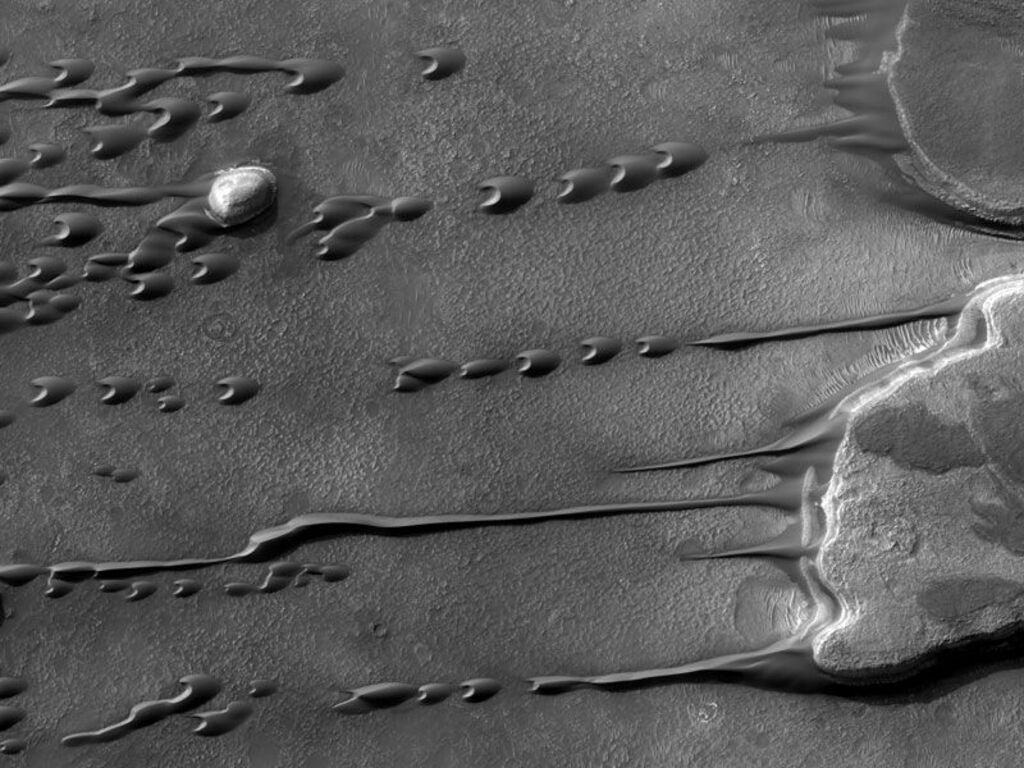
Flowing Barchan Sand Dunes on Mars
When does Mars act like a liquid? Although liquids freeze and evaporate quickly into the thin atmosphere of Mars, persistent winds may make large sand dunes appear to flow and even drip like a liquid. Visible on the above image are two flat-top mesas in southern Mars, where the season is changing from Spring to Summer. A light dome-topped hill is also visible on the far left of the image. As winds blow from right to left, flowing sand on and around the hills leaves picturesque streaks. The dark arc-shaped droplets of fine sand are called barchans and are the interplanetary cousins of similar Earth-based sand forms. Barchans can move intact downwind and can even appear to pass through each other. Over the past few weeks, winds on southern Mars have been kicking up dust and are being watched to see if they escalate into another of Mars' famous planet-scale sand storms.
Tuesday, January 30, 2024
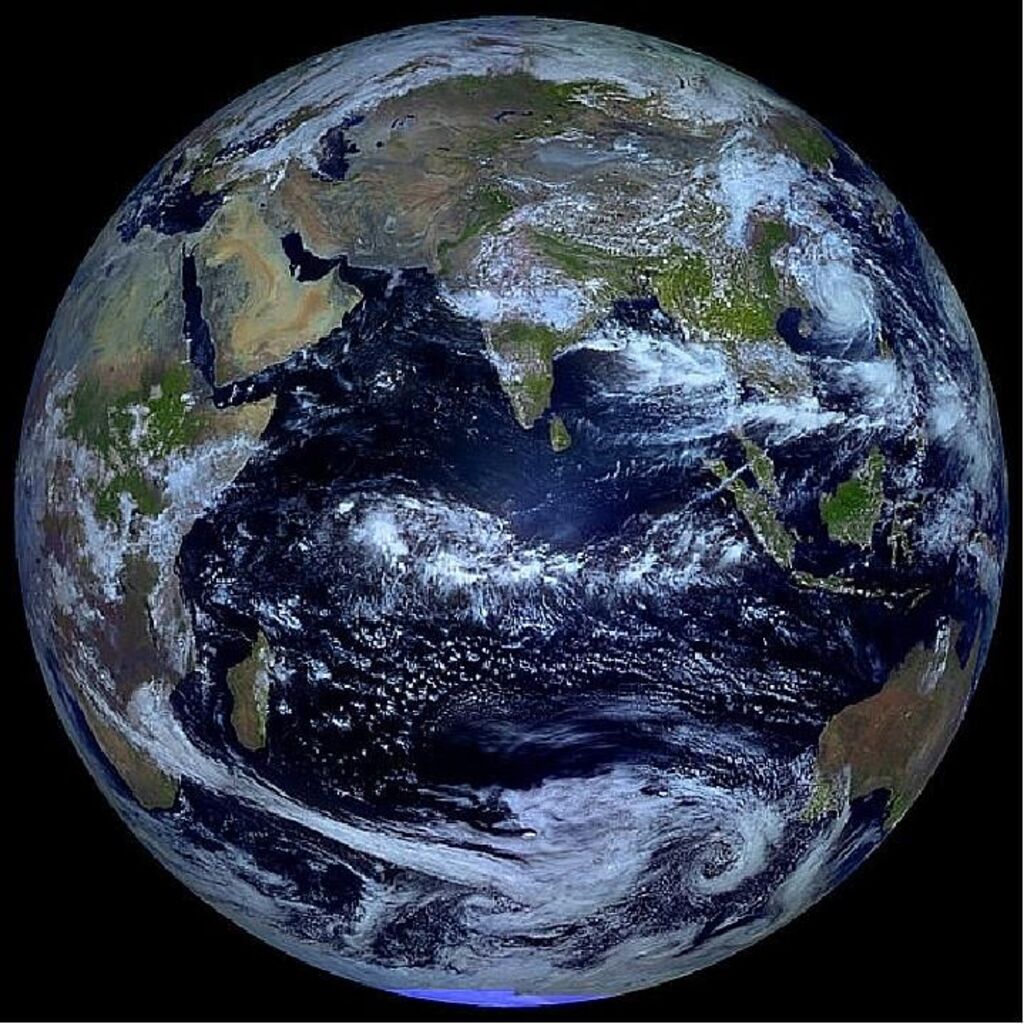
Earth at Equinox
The Earth is a tilted top, spinning at an angle (about 23 degrees) as it orbits the Sun. Because of this, there are only two times a year when both hemispheres receive light from pole to pole: the equinoctes (the plural of “equinox”). These occur on or around March 22 (generally called the vernal equinox) and Sept. 22 (the autumnal equinox). At 05:30 UTC on Sep. 22, 2013—just hours before the actual moment of the equinox—the Russian weather satellite Elektro-L took the photo above, showing our evenly lit planet. You can see a typhoon off the coast of China, winds streaming east from southern Africa, the deep blue oceans, green vegetation (actually taken using an infrared camera, which highlights plants), and brown deserts.
Wednesday, January 31, 2024
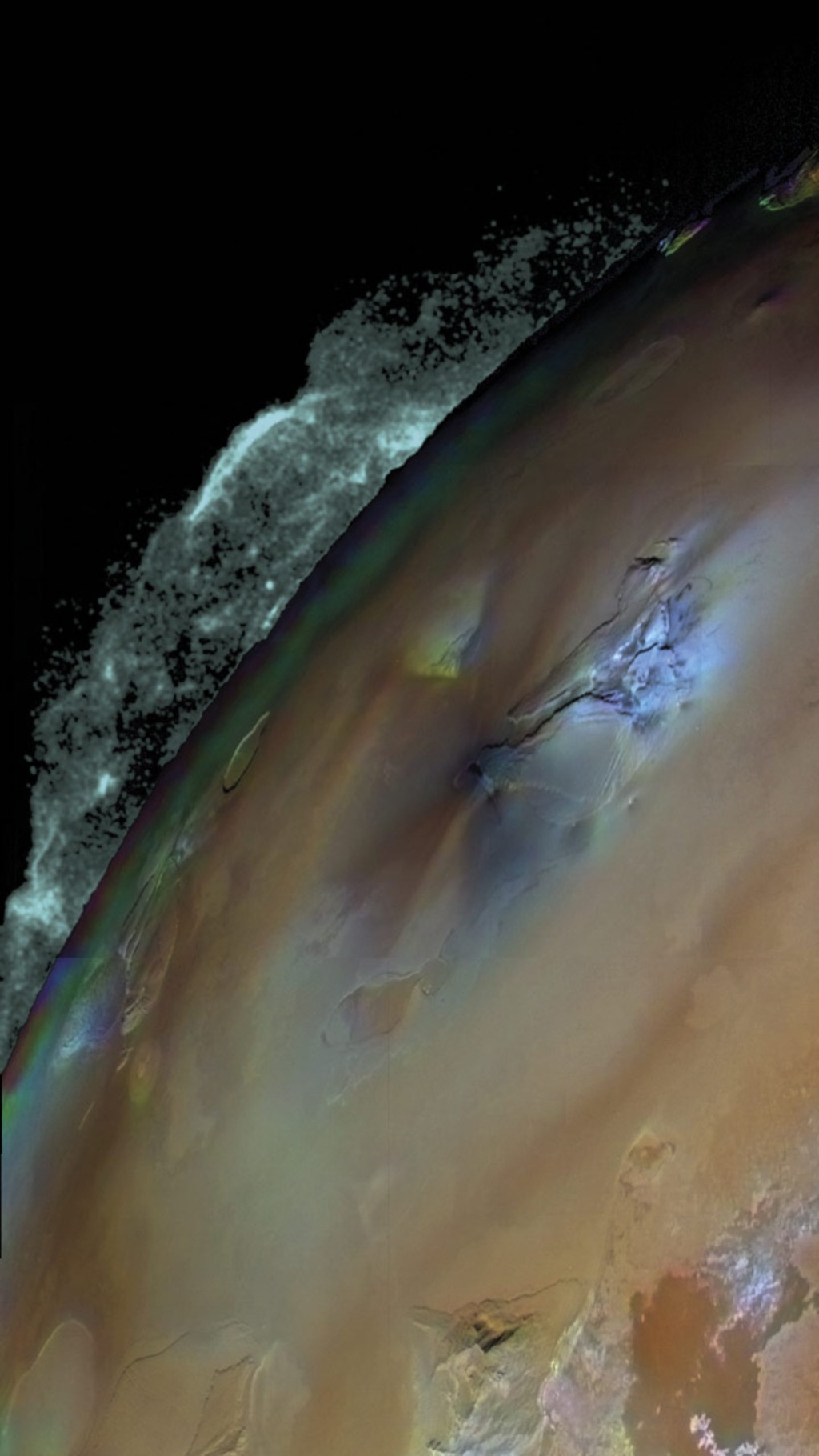
Volcano Voyeur
Trailing the Voyager 2 spacecraft off the launch pad by two weeks, Voyager 1’s faster flight path brought it to its targets (Jupiter and Saturn) months ahead of Voyager 2. Among Voyager 1’s most startling discoveries was the first observation of extraterrestrial volcanos. In this Voyager 1 image of Io, one of Jupiter’s four largest moons, the volcanic plume from the Pele volcano rises 300 kilometers (190 miles) above the surface, and the plume fallout covers an area the size of Alaska.
Thursday, February 1, 2024
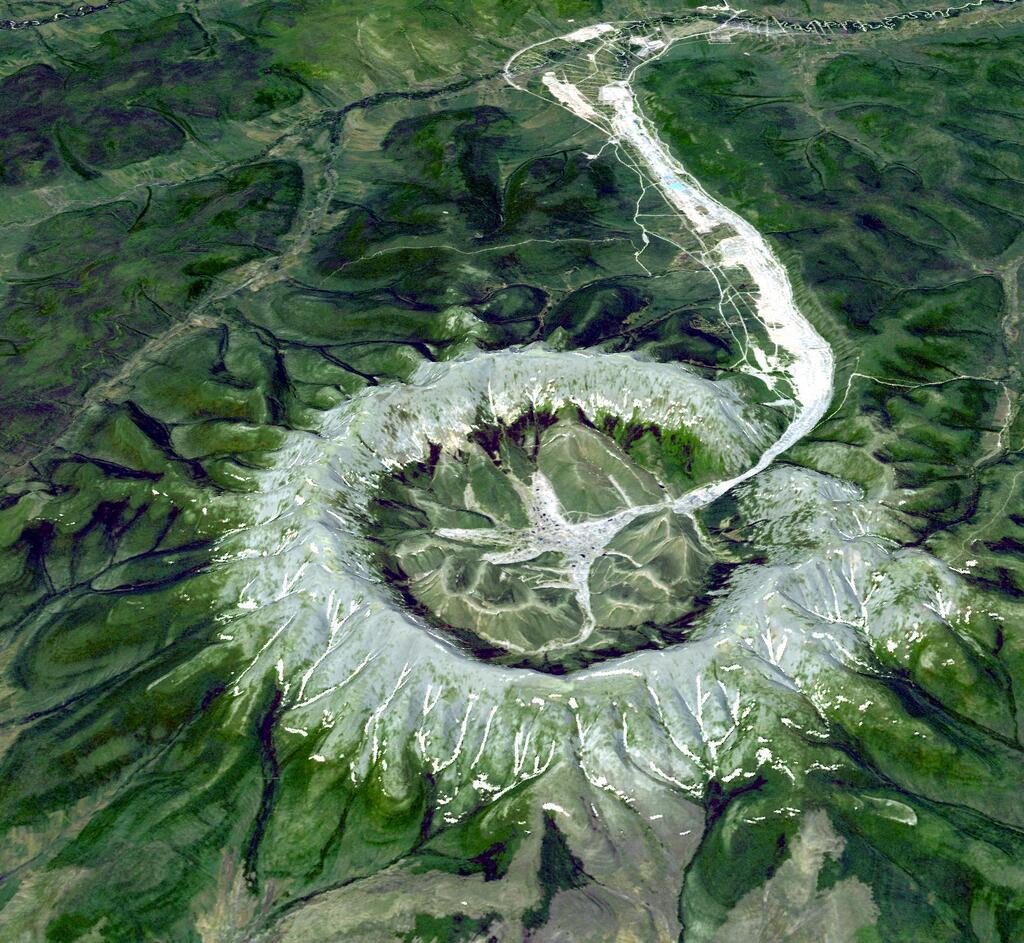
Kondyor Massif, Russia
This is neither an impact crater nor a volcano. It is a perfect circular intrusion, about 10 km in diameter with a topographic ridge up to 600 m high. The Kondyor Massif is located in Eastern Siberia, Russia, north of the city of Khabarovsk. It is a rare form of igneous intrusion called alkaline-ultrabasic massif and it is full of rare minerals. The river flowing out of it forms placer mineral deposits. A remarkable and very unusual mineralogical feature of the deposit is the presence of coarse crystals of Pt-Fe alloy, coated with gold. This 3-D perspective view was created by draping a simulated natural color ASTER composite over an ASTER-derived digital elevation model.
The image was acquired on June 10, 2006, and the massif is located at 57.6 degrees north latitude, 134.6 degrees east longitude.
Friday, February 2, 2024
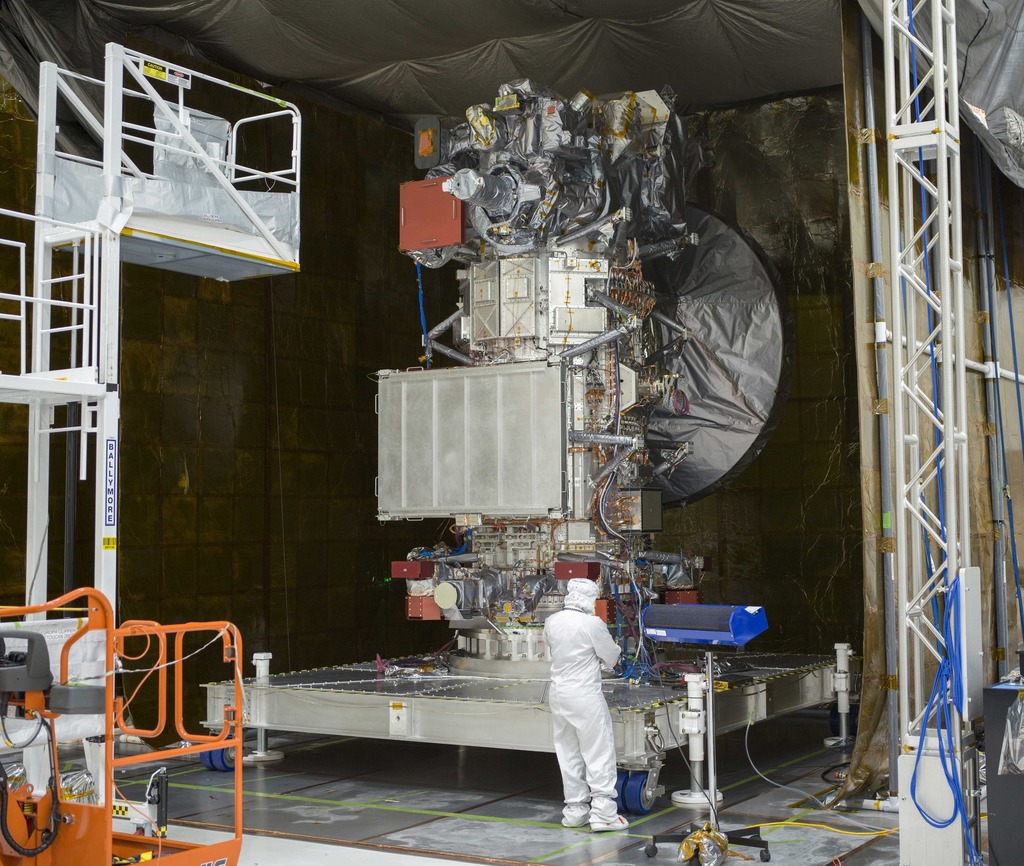
Europa Clipper
NASA's Europa Clipper spacecraft is seen in the main clean room of the Spacecraft Assembly Facility at the agency's Jet Propulsion Laboratory in Southern California on Jan. 19, 2024. The tent around the spacecraft was erected to support electromagnetic testing, which is designed to ensure the hardware will operate correctly in the electrical and magnetic conditions of space – and that the electrical and magnetic components that make up the spacecraft are compatible and don't interfere with one another.
Set to launch from Kennedy Space Center in Florida in October, Europa Clipper will arrive at the Jupiter system in 2030 and conduct about 50 flybys of the moon Europa. The mission's main science goal is to determine whether there are places below the icy surface of Europa that could support life. The mission's three main science objectives are to determine the thickness of the moon's ice shell and its surface interactions with the ocean below, to investigate its composition, and to characterize its geology. The mission's detailed exploration of Europa will help scientists better understand the astrobiological potential for habitable worlds beyond our planet.





